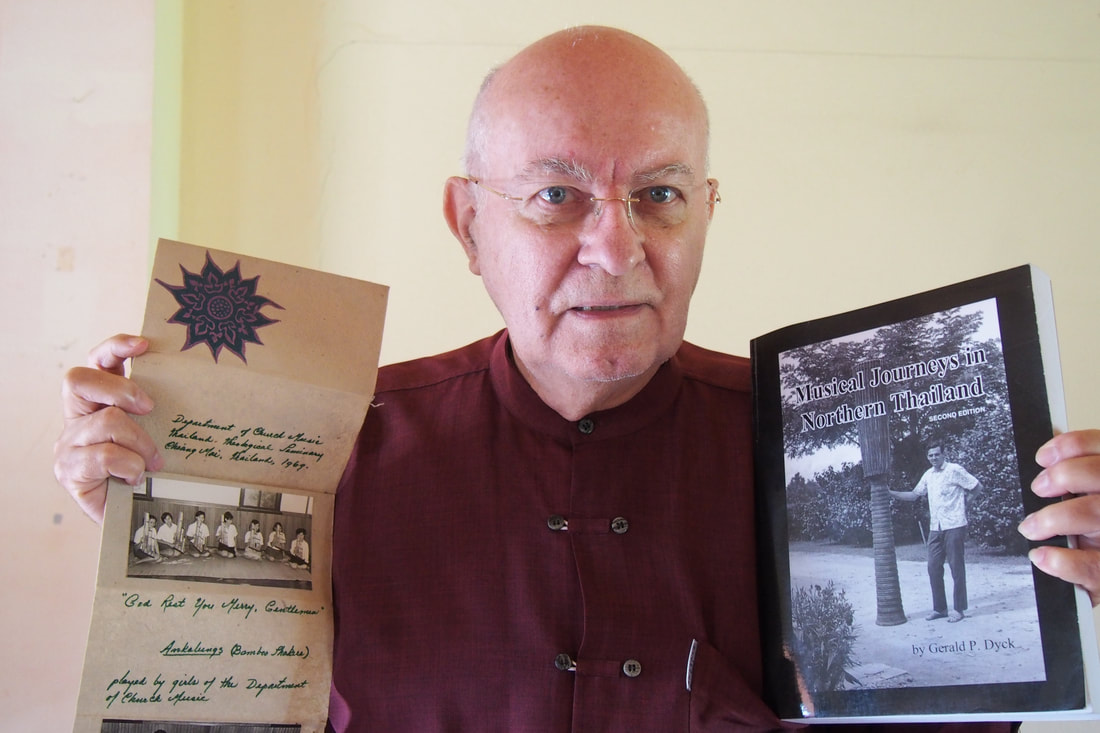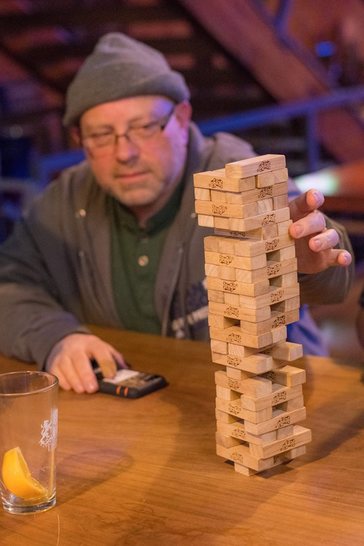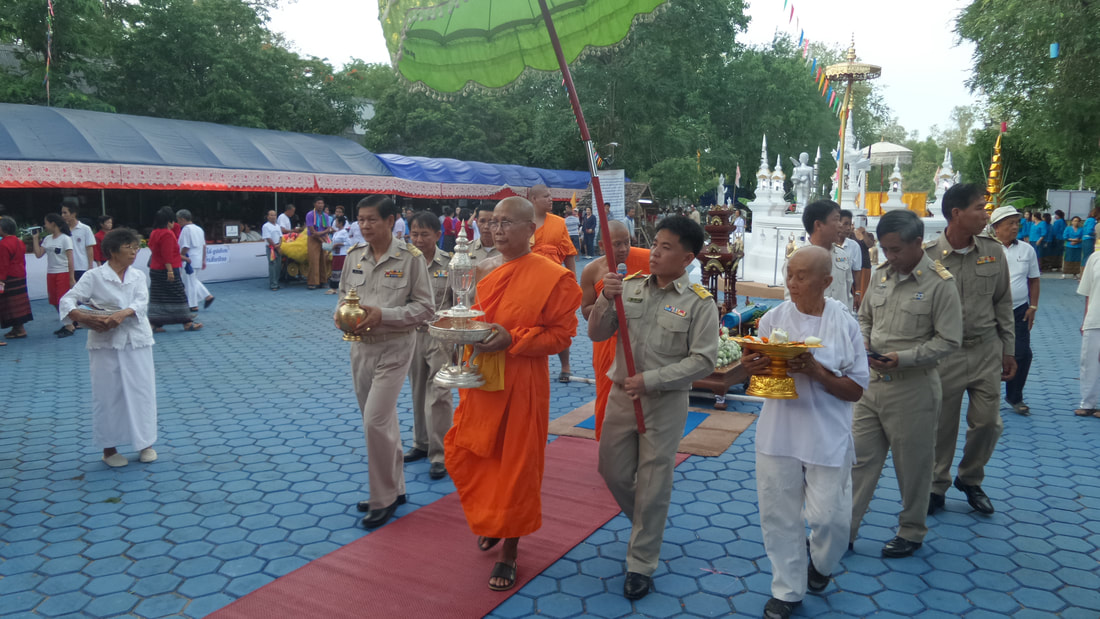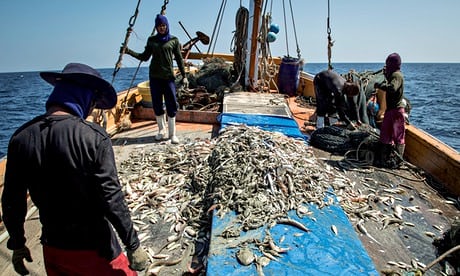|
Gerry Dyck completed a half-century project last year which made a significant contribution to preservation of the folk arts of North Thailand and Lanna culture. In October 2016 Gerry delivered almost 1500 musical segments to be made available through Rajabhat, Chiang Mai, and Payap Universities. The audio clips had been recorded on reel-to-reel magnetic tape over a four-year period from 1967-1971. But, thanks to modern technology, the entire collection of more than 150 computer discs now fits onto a 38 gig data storage device the size of Gerry’s finger. This database is in the hands of the 3 Chiang Mai institutions, thanks to Ajan Songkran Somchandra สงกรานด์ สมจันทร์ of Rajabhat Chiang Mai University.
Gerry’s projects in Chiang Mai in 1967-71 were two-fold. He and his wife Edy Fagerbourg Dyck were missionary co-workers sent by the United Presbyterian Church to the Thailand Theological Seminary of the Church of Christ in Thailand. Gerry was to help with the seminary’s Department of Church Music. The department prepared high school graduates to be church and church-school choir directors and music teachers. But Gerry made an effort to expand church music beyond Western (i.e. “international”) hymnody, to include indigenous Northern Thai instruments. Objections were formidable from both those who thought the future of church music was with guitars, and those for whom Thai instruments evoked a past haunted by ghosts and the occult. A high point in Gerry’s effort came when the 1969 Christmas concert was presented using Thai instruments. [I have saved the folder of pictures Gerry sent me from that concert. Alas, the cassette tape has disintegrated.] I believe, over all, Gerry’s efforts to convince Thai churches to be open to their own local forms of music were more successful than most projects to persuade churches to incorporate indigenous art and architecture. (See, for example: www.kendobson.asia/blog/cultural-christianity.) Over the years the stigma has gone and Northern Thai instrumental groups can help lead worship without protest. The second area of Gerry’s endeavors had to do with ethnomusicology, the study of ethnic music, in this case traditional music of Chiang Mai and Lampun Provinces. Gerry attempted to record as many traditional performers and groups as he could. He often focused on trying to record the entire repertoire of particular musicians, or finding as many performers as he could who knew how to make or play certain instruments. It is that which led him to what became his best known effort, revival of dying pin pia music พิณเปิ๊ยะ. Gerry tracked down every player of the pia he could find, most of them very elderly. He oversaw reconstruction of instruments from parts found in antique shops and described the music and instruments in detail. It was the threatened demise of the pia that attracted attention and set in motion a chain reaction leading to renewed interest in the unique music of Lanna Thai culture. This heritage has now expanded through music departments and groups doing recordings as part of the Northern Thai cultural renewal movement. Meanwhile, Gerry collected instruments and documented how they were made, especially drums. His collections of instruments have now been turned over to Thai music departments in the USA where they enable students and teachers to conserve Northern Thai music in another way. From 1971 to 2006 Gerry’s extensive collection of recordings remained largely unused and unavailable, in the days before the IT explosion through YouTube, Facebook and the like. A break came in 2006 when Gerry located a set of films and sound tapes he and Dr. David Morton of UCLA had made in 1969. They had been inadequately filed in UCLA archives, but when they were found and reformatted they renewed interest in the pin pia and Northern Thai music. This inspired Gerry to get on with his penultimate ethno-musical project, production of his notes and memoirs. The result was self-publication of a book entitled Musical Journeys in Northern Thailand, including 200 pages (of a total 333 pages) describing the 4 years of musical investigations with extensive field notes and hundreds of photographs. Gerry and Songkran’s relationship began with the distribution of the first edition of Musical Journeys. I understand that Aj Songkran has edited these notes and translated them, forming a body of research that is now being used as Lanna cultural historians rediscover their heritage. The work of uncovering and disseminating Northern Thai music is being carried on by the younger generation, including Aj. Songkran who published History of Lanna Music ประวัติดนตรีลานนา in 2016. The final contribution to ethnic music studies that Gerry has made is to digitally re-master his entire collection, his book, and the recovered films. The job is done.
1 Comment
I’m not in a very thankful mood this year.
Thanksgiving on the fourth Thursday of November in the United States is a patriotic holiday. The narrative goes that the first Americans – that is, Massachusetts Pilgrims – survived their first year with agricultural advice from natives. The Pilgrims celebrated their harvest with a festive meal to which they invited their helpful neighbors. Some 200 years later, at the beginning of the great American agriculture boom and a time of acute social fractures, a harvest festival that coincidentally celebrated national fraternity and good will was thought to be a timely idea. So Thanksgiving Day was declared. Who doesn’t like a holiday, especially one that tends to extend a weekend to four days? But I think I’ll pass on Thanksgiving again this year. Here’s why: 1.America is closer to civil war than at any time since 1865. 2.American patriotism is linked to American militarism. 3.American values are being trashed in behalf of political ambition. 4.The American Thanksgiving narrative is a fiction. 5.The second reason for Thanksgiving (family reunions) doesn’t apply to me here outside of America with only Thai family nearby. 6.Nostalgia food here in Chiang Mai is generally disappointing and very over-priced. I don’t want to debate these matters. I don’t want to dampen anybody’s celebration. I’m going to be gloomy about America, tucked into the end of our valley without making a fuss. I’m under no illusions that we are free from danger here. My withdrawal from the turkey dinner table is not about escaping. Here, we have just cremated the national unifier and are now without one. Militarism has again been re-installed into the constitution with Army generals running the government. Disputing national narratives can get you imprisoned for decades – far longer than, say, murdering your spouse. Social structure is crumbling as people turn to salary-values over community-values. Religion is systematically appropriated to validate national matters but never allowed to hold anyone accountable. This is a place where the weather is pretty good but everything else is fairly tenuous. I don’t expect things to fall into chaos either here or in the USA. But the big players on both sides of the ocean talk about building stronger cultural compositions while they are pulling pieces out of their Jenga structures at such a reckless rate I just don’t feel like turkey and pumpkin pie this year. [Thanks to Andrew Dobson for the picture of Buzz Ullrich playing Jenga.] TEMPLE SECRETS
Every year the “heart” of the chedi (stupa) of Wat Chom Jaeng is taken for an excursion around the village. People vie for the chance to have the sacred object pass by or pause at their house. The return to the temple precincts is usually a major community event culminating in a festive procession involving units from neighboring villages. The heart is then reinstalled into the chedi. When the new chedi at Wat Ta Pong was completed, the last formal ceremony was the installation of a heart in its upper region. The heart, I was told by the abbot, was a donation from the Supreme Patriarch of the Buddhist Sangha hierarchy in Bangkok. I understand the item looked like a crystal about the size of a child’s thumb, encased in a transparent, sealed glass case, very much like the one in Wat Chom Jaeng. As far as I know this heart is not going to be taken on any excursions. That it not to say the heart of the chedi will not go on its own. It is widely believed that the heart of the chedi can depart to visit sacred places. I was eating lunch with a group of 6 women a few months ago when this subject came up. All 6 of them told me in no uncertain terms they believed this happened, and 5 of them insisted they had seen it with their own eyes. What they described was balls of light emerging from a temple in the vicinity of its chedi and then zooming away to pause here and there, including other temples. An abbot confirmed this notion. “When I was a young novice I saw this happen. The ball of light rose from a temple in the distance. It was very beautiful. 5 or 6 of us saw it. The light rose out of the temple and split into three lights that soared in different directions. Sometimes they would disappear or dive down out of sight and then reappear.” The abbot repeated that the lights connected with sacred places. Internet websites dedicated to paranormal phenomena describe balls of light sightings from all over the world. Some of them seem to be so predictable that groups gather to watch. In Thailand the most famous are balls of light that rise out of the Mekong River at Nongkhai, attributed to a Naga that resides in the river. Skeptics suspect a more human manufacture, but the skepticism has only increased the number of spectators. Before we rush to conclude that the connection between these balls of light and a crystal from His Holiness the Supreme Patriarch is the imagination of simple folk, pause to consider three matters: (1) Buddhism in Thailand is composed of several realms of discourse, each based on its own set of propositions. (2) The issue of whether there is or is not a verifiable connection between evidence-based assumptions and significance of religious articles is tenuous as well as unnecessary. (3) Buddhist truth (Dharma) is philosophical, while the rest of Thai Buddhism is metaphorical or optional. With regard to hearts of chedis being seen as balls of light, at least part of the concept is accepted as supernatural. One characteristic of the supernatural is that it is lightly held in some way. It may be an open question about whether the phenomenon exists or happened; uncertainty is implied. Even when people are sure of what they saw or experienced, its meaning may be uncertain; and since religion is always about meaning, it may have nothing to do with religion. Even if it is insisted the phenomenon has to do with religion it may be uncertain that it connects to any physical object, no matter how sacred that object may be held to be. Sacred objects, be they stones, statues, or relics, reveal their nature to those who are paying appropriate attention. In no case, however, is the significance of a metaphorical symbol impacted in the slightest by supernatural attributions or by denial of them. (This is a point which critics of religion ignore.) It is instructive that people call the event at Wat Chom Jaeng “prapaynee song phra that” which could be literally rendered “the custom of accompanying the divine foot” or “foot-step”. Phra that is a designation for not only a mystic footprint of the Lord Buddha but also for a chedi. Every chedi represents the world mountain, an axial shaft between heaven and hell (associated with the mysteries of birth and death). The Lord Buddha stepped off the top of the world mountain to depart between reincarnations, as may be inferred from legends of the previous lives of the Lord Buddha. A Thai Buddhist temple that has been granted the honor of constructing such a chedi usually adds “phra that” to its name (e.g. Wat Phra That Doi Sutape). Several things can be noticed about these random observations of the chedi and its heart: 1.A chedi is a reliquary containing bones of a person or a relic of the Lord Buddha. 2.A chedi is a monument, meant to be a permanent marker of a sacred place. 3.A chedi is a tradition based on earliest Buddhist structures. 4.A chedi is a metaphor symbolizing the world mountain as a stepping stone to eternity. 5.If a chedi is completed by installing a heart, it is a mystic (occult) action that links it to all chedis and to the Lord Buddha. 6.It is widely held that one derives blessing and makes merit by walking reverently around a chedi. 7.Similar blessings accrue when the heart of the chedi is taken on an excursion. 8.Most chedis have never been said to emit balls of light, so this is not an essential characteristic of a chedi, but it indicates that people believe that the sacred structure has an independent existence that may be more than symbolic. CONCLUSION: A chedi is a sacred object. How any particular chedi is sacred is a mythic, mystic mystery. Imagine you had attended the dedication of a facility about 6 years ago. It was a happy occasion bringing together a collection of grateful parents and their children, a few village officials, some church leaders, and a delegation of donors from overseas. There had been a tour of facilities including playground, offices, classrooms and recreation area. Extension plans had been unveiled and then a ceremony that featured a speech in which the donors were thanked in behalf of the board of the facility made up of resident foreigners and a village alum (safely named Alum for this essay since Alum was an alumnus of the university where we both work; the reason for “safety” and anonymity is the topic of this essay). Alum represented the church and had connections in the provincial capital. Alum grew up in that village and had been ordained and had a doctoral degree. Alum was entrusted to get the land transferred to the board of the foundation and get the facility registered with the education ministry of the government.
Imagine that the facility functioned for the intervening years and is still functioning as it was designed to function. Imagine that when it came time to re-register the facility a few months ago it was discovered that Alum was listed as the sole owner of the land and buildings and also listed as the owner of the facility. Alum had included only one name on all the dotted lines. When this was pointed out, Alum was asked to correct the documents and transfer everything to the foundation as was the original understanding. Imagine Alum refused. Imagine, instead, Alum initiated legal action against the former church official who blew the whistle. The lot of a whistle blower in Thailand is perilous. Under Thai law it is illegal to do anything that directly or indirectly implicates someone in a way that might malign their character and imply shame. No matter that the facts can be proven with evidence and witnesses. No matter that documents have been misrepresented or even forged. Imagine Alum has a long history of acquiring property under suspicious and false pretences. Alum has acquired a valuable art collection that way. But Alum is still a clergy member of the church in good standing and even holds a position in a church institution. Church officials are disinclined to take action because it would be frightfully expensive to bring charges against Alum. Church officials, being Thai church officials, very, very much want to avoid conflict and even more want to avoid public controversy. The national church once fired its top executive officer for voicing criticism of the national government. For the church in Thailand maintaining a low profile is one of its highest priorities. It is better not to talk openly about scandalous matters. Maybe they can be ironed out. Maybe the facility will just go on doing its job. It is, after all, rather far away up in the hills. Remember this is an imaginary case. Any inference that this refers to anyone in particular is unfortunate and beyond the intent of this essay. Right? The purpose of this essay, to be clear about it, is to remind readers that even though the hidden costs of permissive injustice potentially exceed the immediate costs of processing cases as they arise, there is a deep-seated cultural reason why this happens. There is a large gas station sitting in the middle of a church school campus because the church refused to confront the important person who built the station. There is a church, one of the largest in Thailand, that lost a chunk of its property to a doctor who was allowed to build a clinic on it decades ago. A large number of investors lost life savings when a church agency defaulted on its investment plan rather than endure the public outrage and loss of face that would have resulted from trying to recover the funds. The list is long. These are not simply cases of weak-will and timidity. These are deeply cultural instances wherein whole institutions prefer to take the passive course of inaction rather than inflict shame on others and risk the unpredictable consequences that might follow. Unpredictable as the reaction of an aggrieved person might be to be cited or charged, relief of society at large when such a case is settled is certain. The whole social order is aligned against conflict and is predisposed to forgive and let lie if at all possible. It is assumed to be possible. Overwhelming social pressure is in favor of it, even though the delicious gossip must be handled as if the story is imaginary and the principals have no names. If, by chance, someone is openly charged and named, in almost all cases the reason is to eradicate that individual who has fallen from favor or to deflect blame from powerful figures who would be implicated if there were not scapegoats to take the blame. Litigation can be persisted in, when someone feels unjustly aggrieved; but the effort is to keep those cases quiet and quickly resolved. Overall, the dynamics that society expects is freedom from social conflict and personal intimidation rather than rule of law. Those who must be protected are those of higher status than those being abused. In cases in which the contest is between social equals, society demands resolution without resistance. A seafood processing conglomerate was secretly investigated and slavery of employees was exposed. The reporter was charged with defamation of character by the owners of the conglomerate. Government effort was directed at restoring the reputation of the seafood industry rather than emancipation of the slaves. An important politician was discovered to have plagiarized the content of his graduate thesis. The professor who tried to block his graduation was charged with defamation of character even though university recognized that the thesis had been copied almost word for word from an un-cited source. A boy was beaten a couple of years ago, but the perpetrator remains ambiguous to protect the sanctity of the institution and to prevent the charge of assault against one of the cultural pillars of society. Defaming someone’s character or depriving them of livelihood are culturally unforgiveable. Justice for victims is a completely separate issue. One of the most common errors made by expatriates living in Thailand is to misunderstand this delicate dynamic. The principle is culture-wide, and no one is exempt. REMINISCENCES
The Presbyterian Church and its missionaries to Thailand are not particularly keen on saints. The only way they can be tolerated is by implying that Paul’s references to them includes all the church members of the community to whom Paul was writing, a very flawed group. Over the centuries many churches of Christianity have refined the word saints to mean those whom the church identified as exemplary and worthy of emulation because of their faith and accomplishments. Saints are those who are assuredly in heaven beholding the beatific glory of God first-hand. Large branches of the church concluded that these predecessors can also be called upon to carry our petitions to God, which is a very useful benefit. Presbyterians draw the line back somewhere about the time of St. Andrew. When I arrived in Thailand in 1965, fresh out of seminary and zealous in the cause of ecumenical reunion which seemed to be swiftly underway, I believed that it was a good idea to renew positive regard for saints here in this land where ancestors are treated venerably. I also tried to incorporate connections to local Thai culture along with references to the world-wide church. One of the projects I undertook was to introduce a worship service on All Saints Day, which comes on November 1 in our branches of the church. That happens to fall on the day after Reformation Day, counted as the birthday of the Reformation begun by Martin Luther. All Saints Day also comes the day before All Souls Day, which includes everyone else who has contributed to the world as we have it but about whom we cannot be certain of their present heavenly residence. The service we had first in the new chapel of the old seminary building on November 1, 1967 included lighting candles of various colors for Christ, the 12 apostles and 4 Gospel writers, Paul and some Old Testament greats, a couple of patriarchs and matriarchs, and then a line of reformers and missionaries that brought the faith to Chiang Mai. Students and teachers were also invited to light little candles in memory and gratitude for a particular person who was influential in their own journey to faith and into full-time Christian service. By the time this was done the dark chapel was quite well illuminated. When I returned to Thailand in 1979 after a ten year absence I found that, although the movement toward ecumenical reunion of Protestants and Roman Catholics had hit speed bumps, some liturgical innovations had been preserved. That included the candle-lighting service on All Saints Day. (The black and white picture accompanying this reminiscence is from 1980.) Later seminary generations were led in worship at the cemetery in Nong Hoi sub-district where many early Chiang Mai Presbyterian missionaries are buried, including Dr. and Mrs. Daniel McGilvary, considered the founder of the Protestant church in North Thailand as well as the founder of the seminary. (The Rev. William Yoder, Dean Emeritus of the McGilvary College of Divinity of Payap University, is pictured at the cemetery with seminary students at McGilvary’s grave in 2016 on All Saints Day). At this time of year we give thanks “for all the saints who from their labors rest….” |
AuthorRev. Dr. Kenneth Dobson posts his weekly reflections on this blog. Archives
March 2024
Categories |
| Ken Dobson's Queer Ruminations from Thailand |
|




 RSS Feed
RSS Feed
